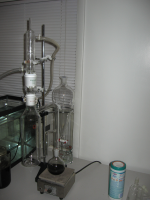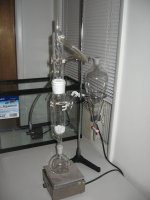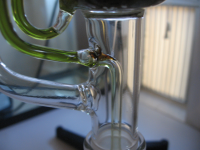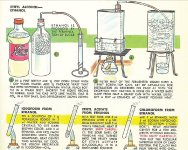SWIM has had many batches of mimosa that yielded next to nothing using techs that yielded about 2% with other batches of bark. My guess is that some of the mimosa out there is now fake. Its getting more and more popular, so I think some people are selling mimosa look alikes to make a quick buck. This has been happening with Hawaiian Baby Woodrose for ages and seems to now be happening with mimosa.
SWIM has never had chacruna that was fake or very low yielding. He calculated how much money he has lost from fake or low yielding mimosa and determined that even though chacruna contains less DMT, the money saved from being burned by fake mimosa was worth the change to chacruna.
Now SWIM almost never uses mimosa.
A 1000 ml CLLE should be filled with about 1000 ml of solvent. The extracting solvent should be about 1/5 of the total liquid in the main solvent area of the CLLE.
If using water and DCM to defat it, you'd need a heavier than water CLLE, the kind in your photo. They are designed to hold 200 ml of DCM and 800 ml of water. But because these handmade CLLEs are not that accurate, the actual amount they hold varies a little. Before running it, make sure you have about 100 ml of DCM in the flask below it and make sure the CLLE is filled 1/5 with DCM and is right about to drain into the flask below. If you add as little as 1 ml of water, a few drops of DCM should drain out. If not, it doesn’t contain enough water so add a few ml more water until a few drops of DCM drain out of it into the flask.
The water should not be less than 4/5 of the liquid capacity of the CLLE. The less water you have, the longer it takes to defat or extract.
For a lab stand, I recommend this one below. It’s cheap, very well made, and large. At just $12.50 it has a 2-hole 7x11.75" base and a 1/2x35" rod. It’s one of the best you can get. I don’t like the tripod kind at all.






